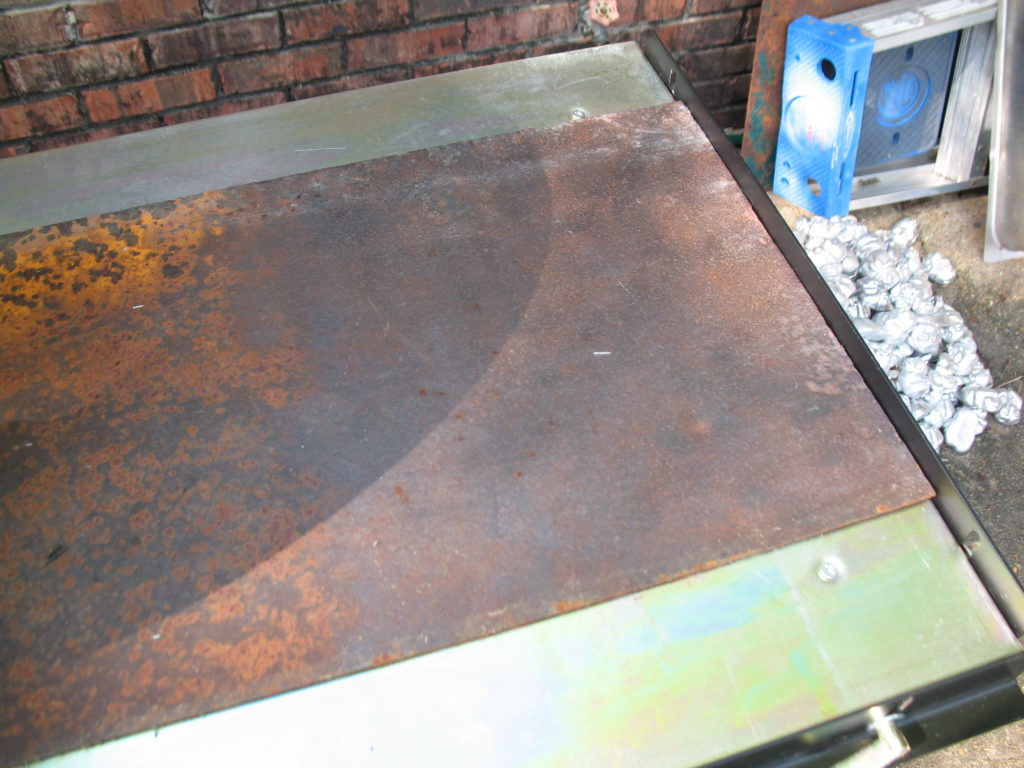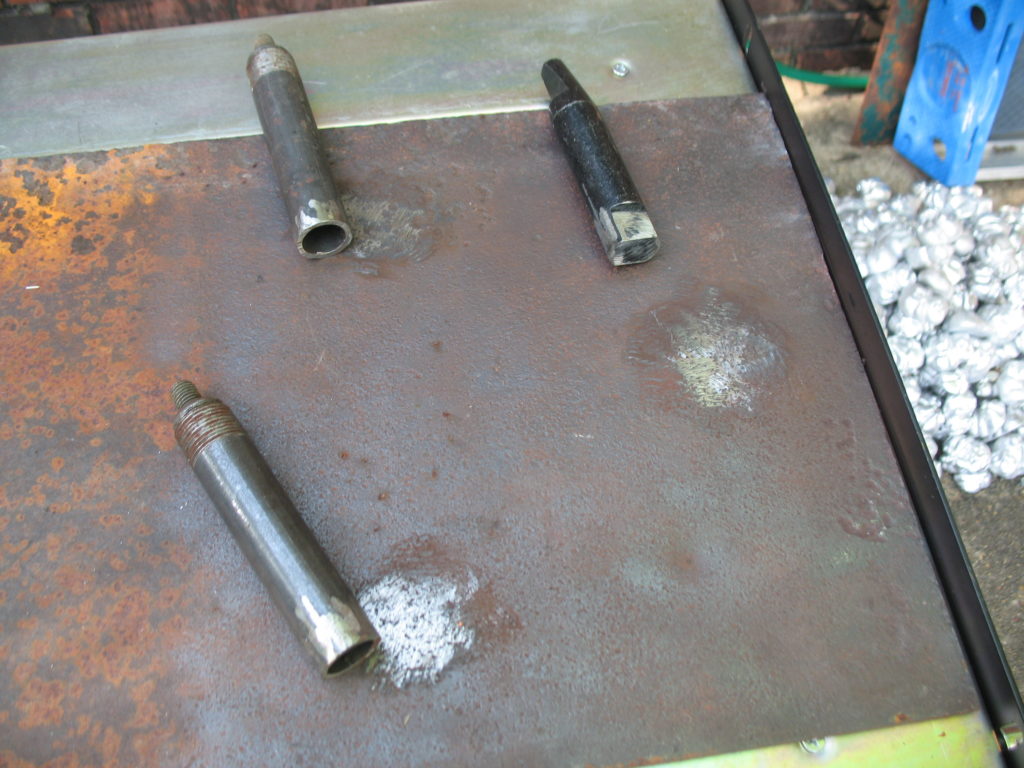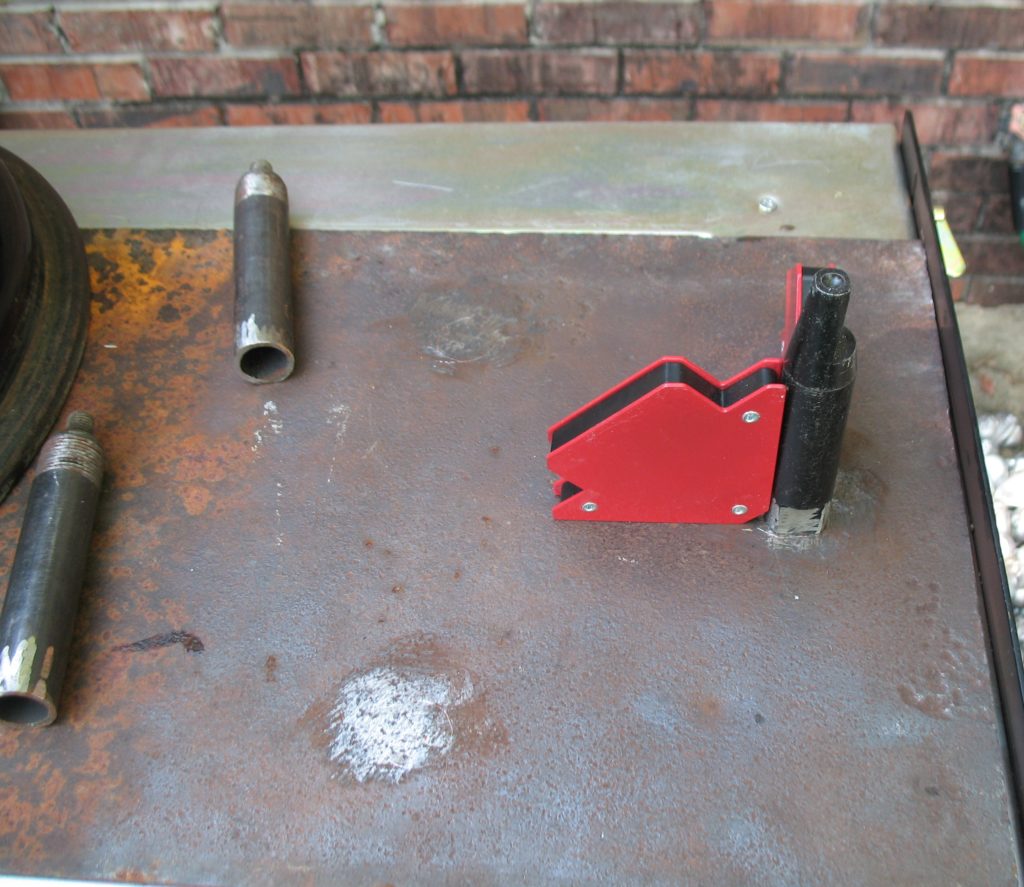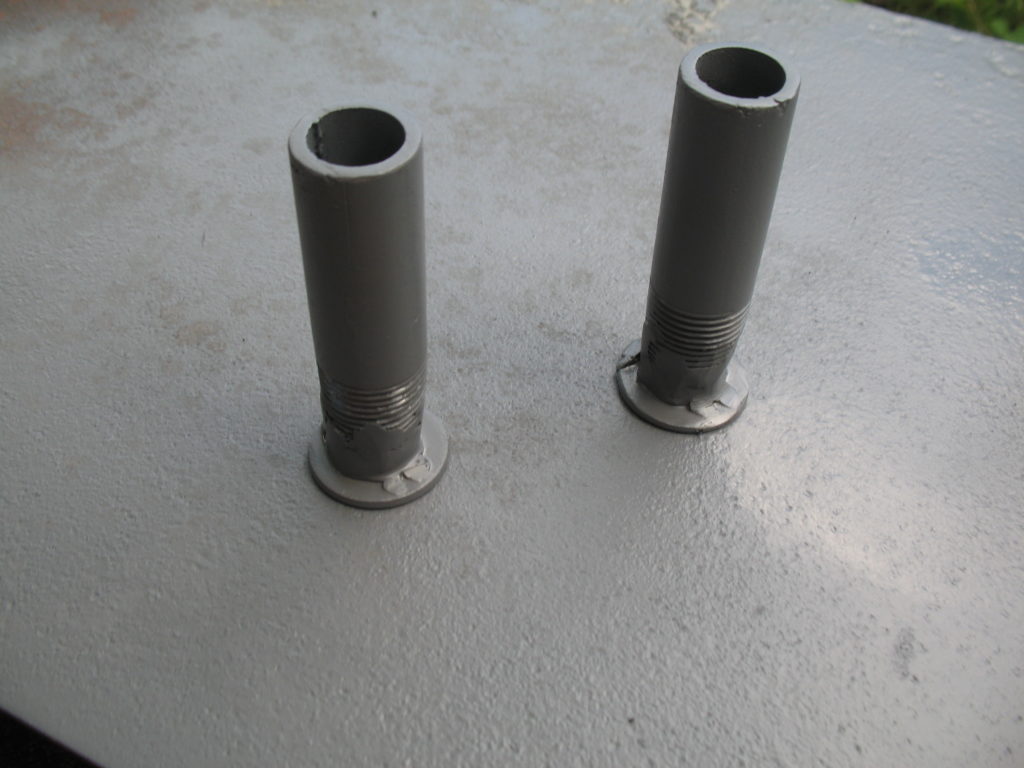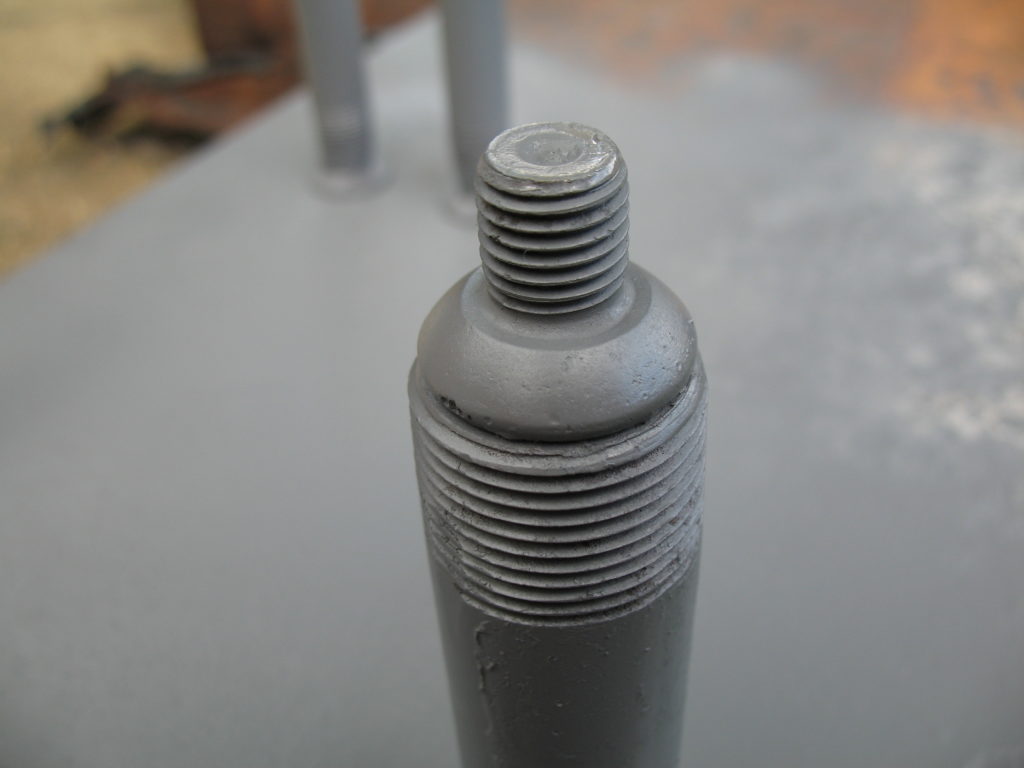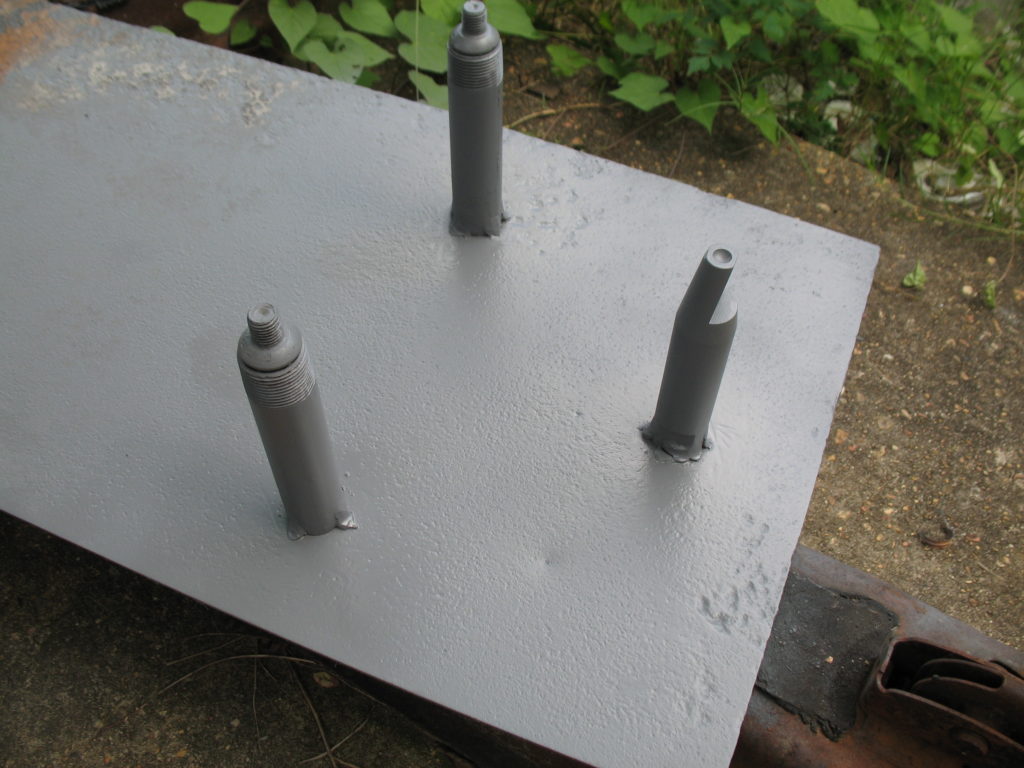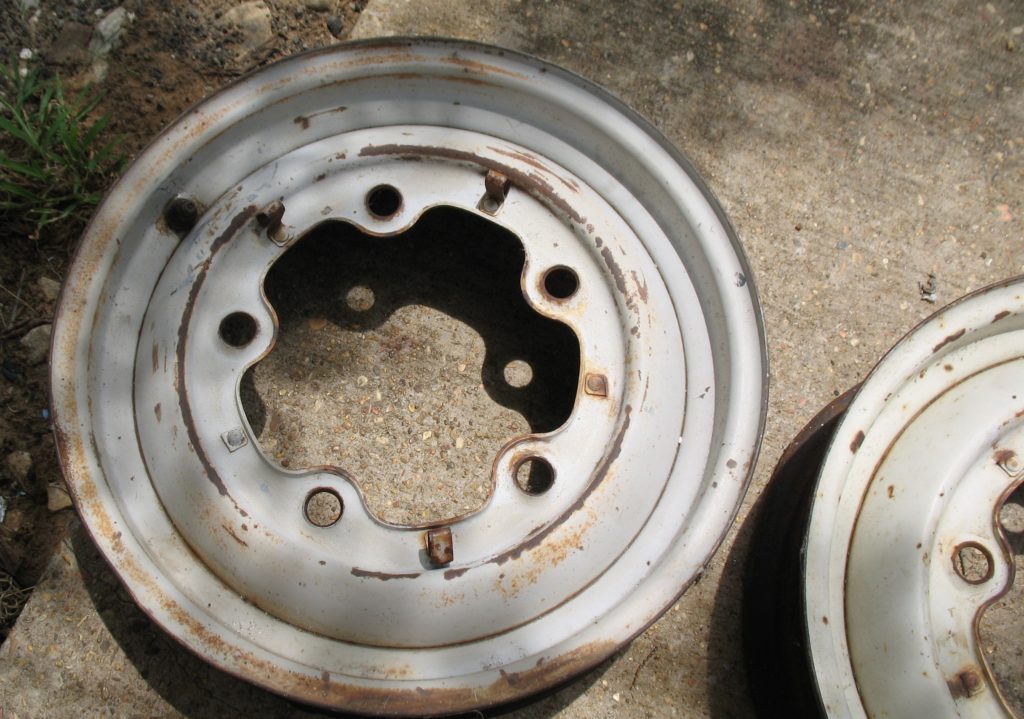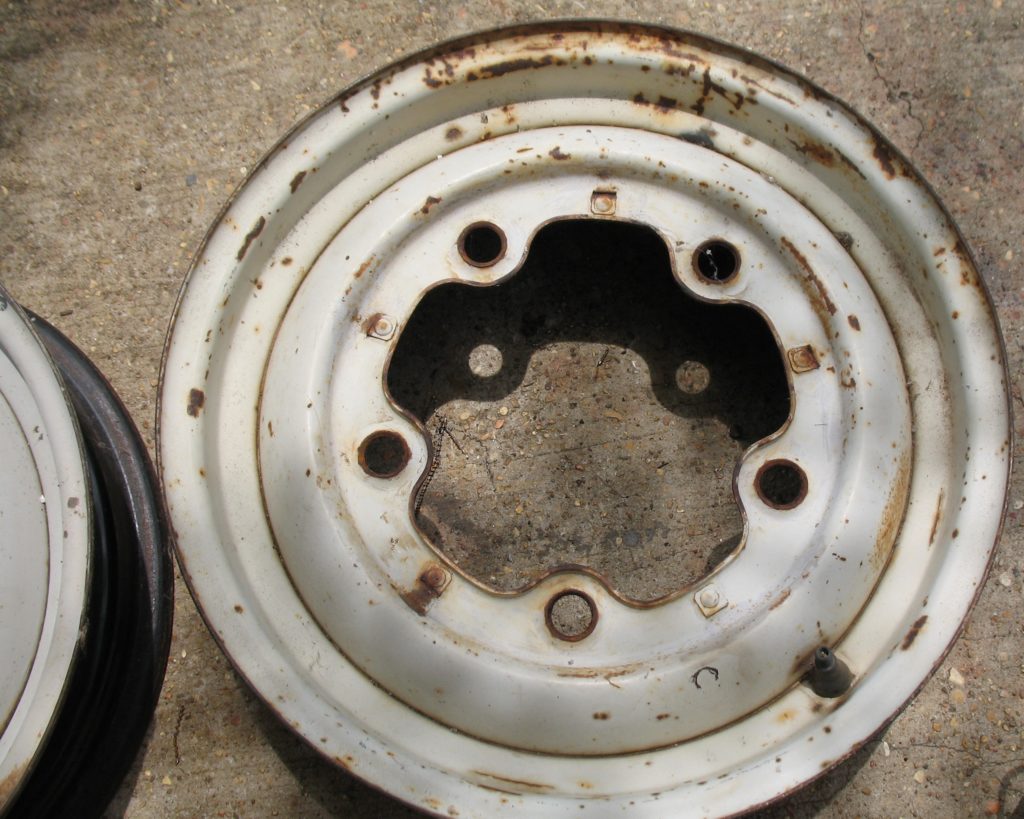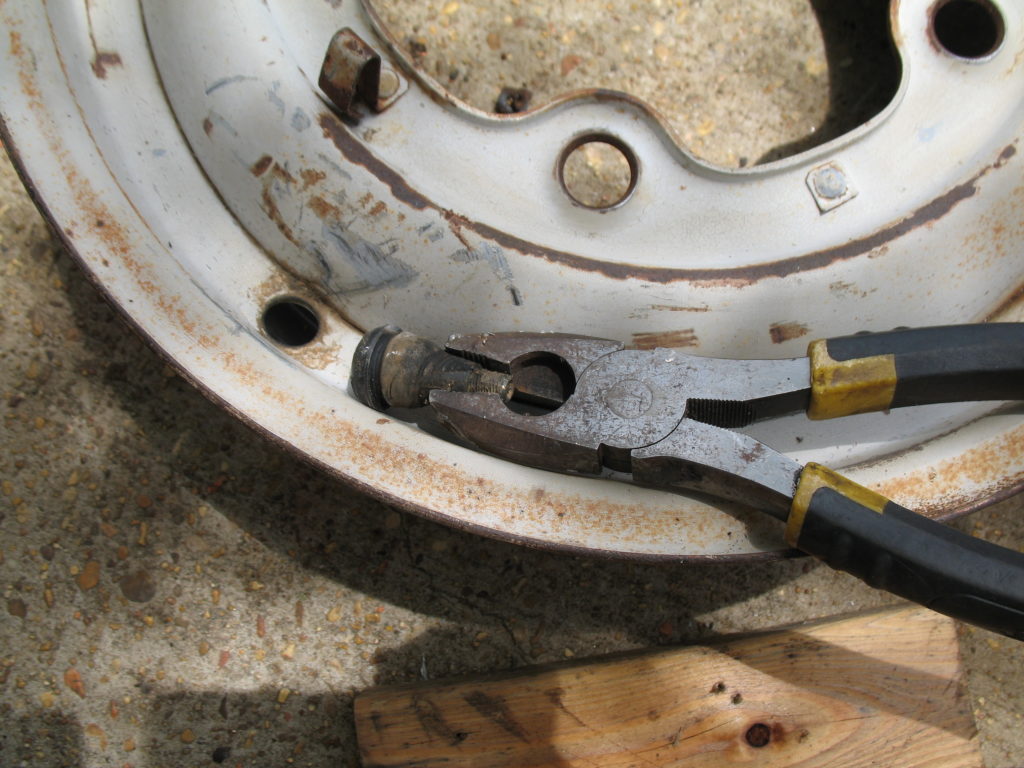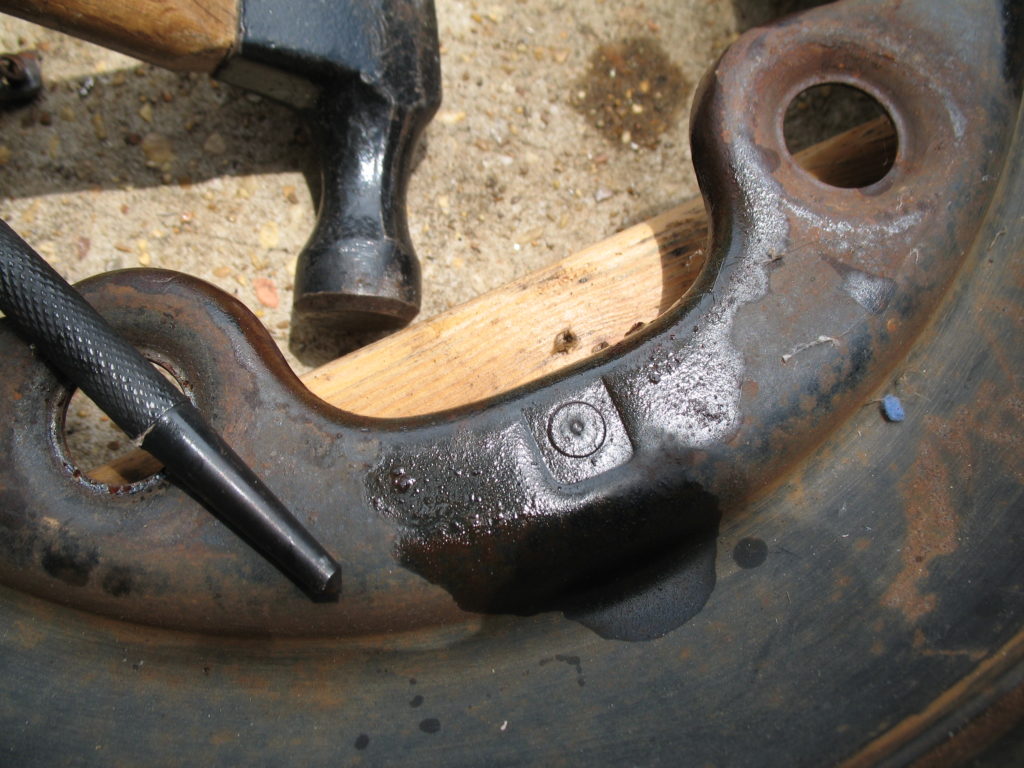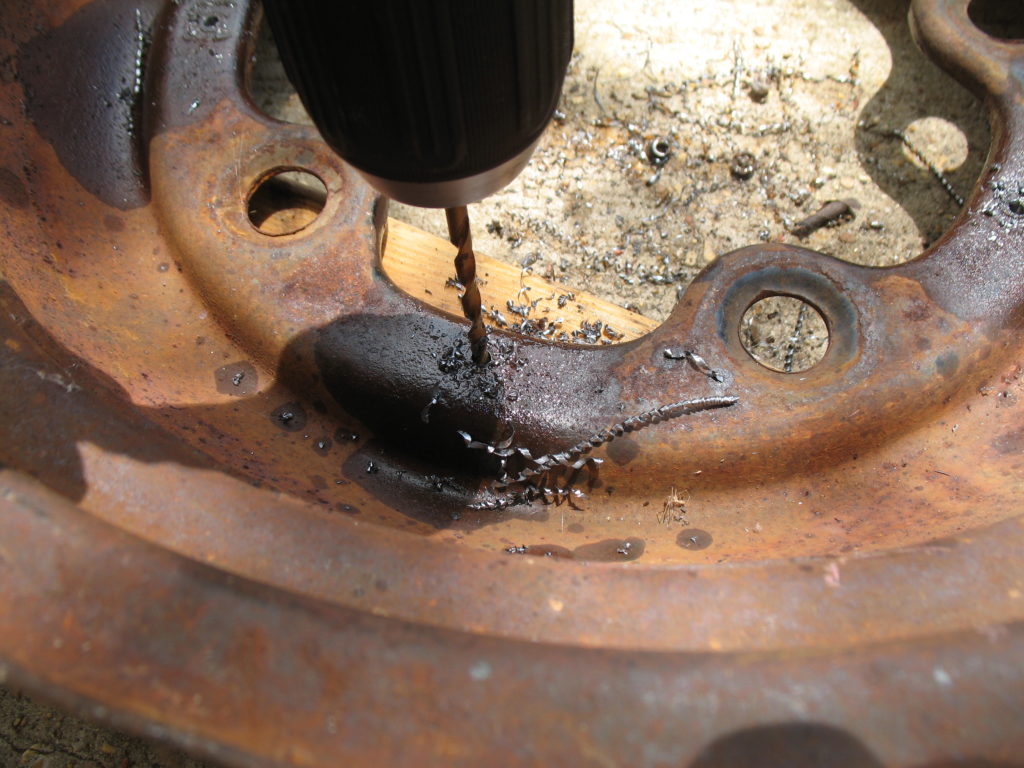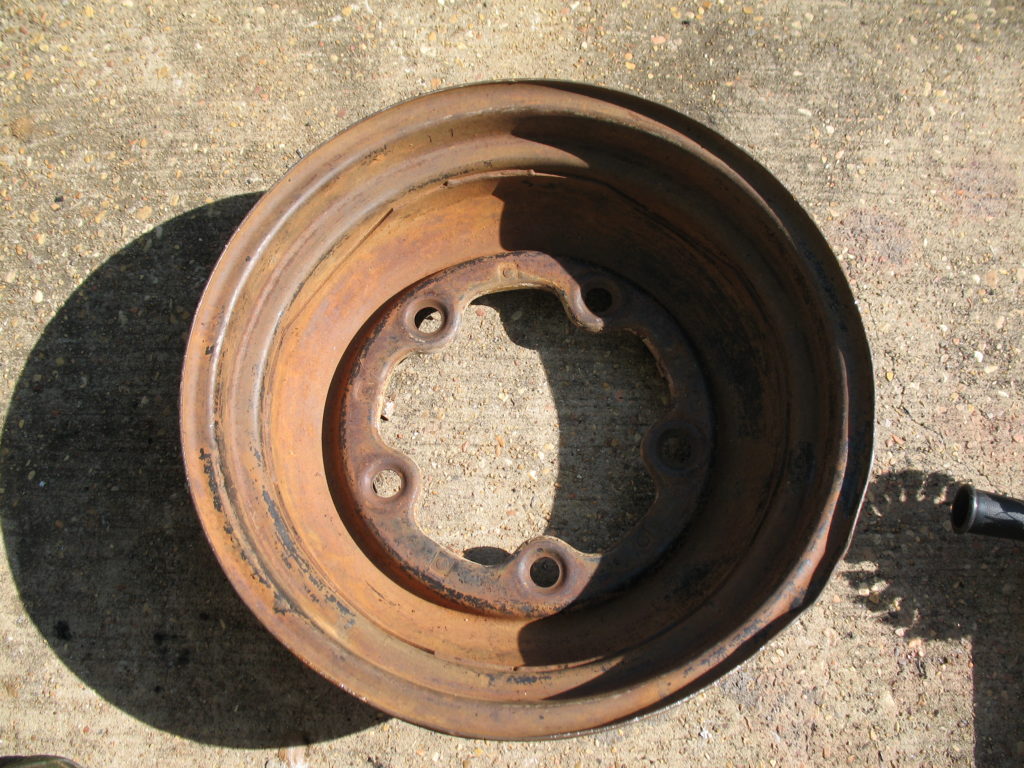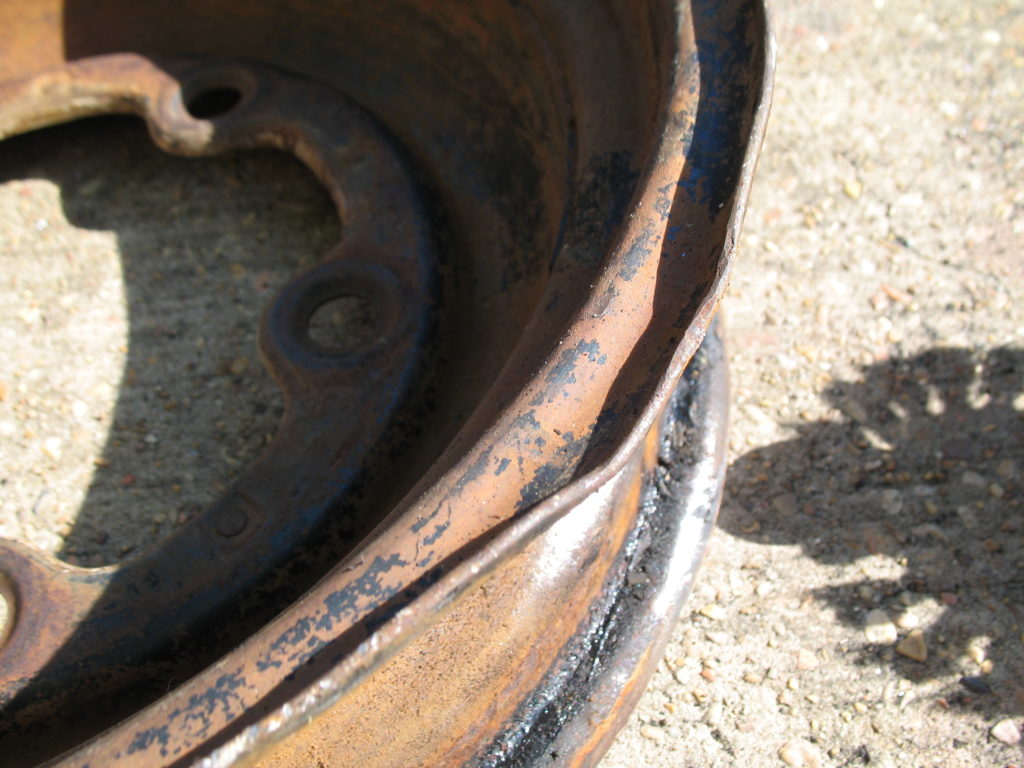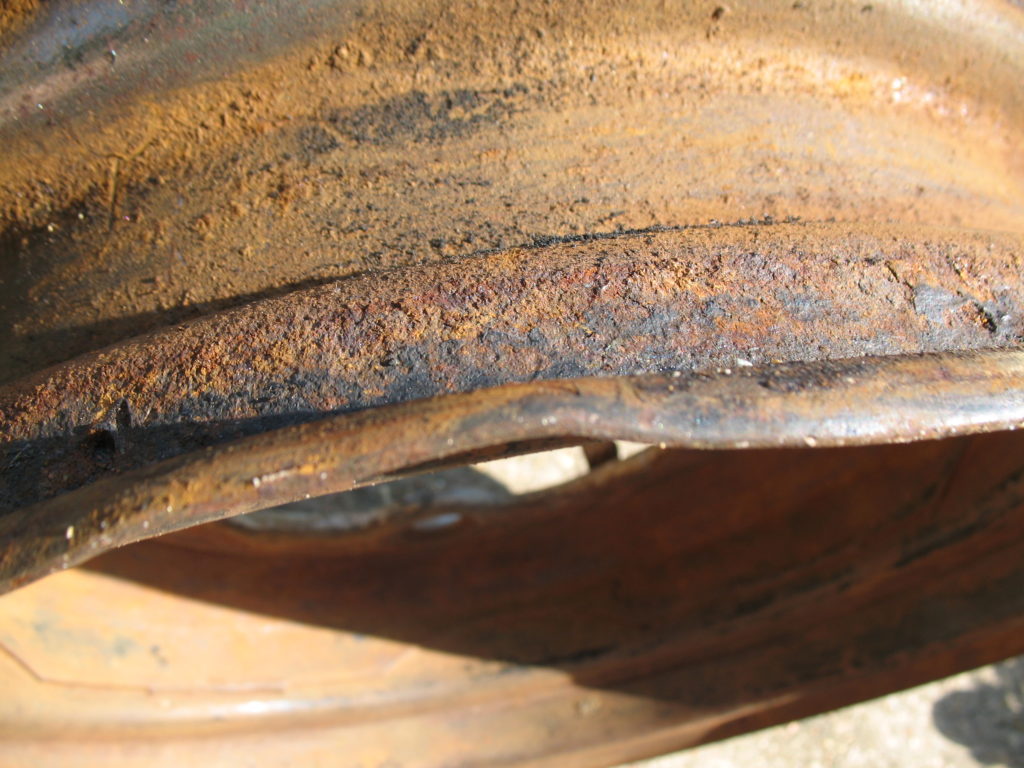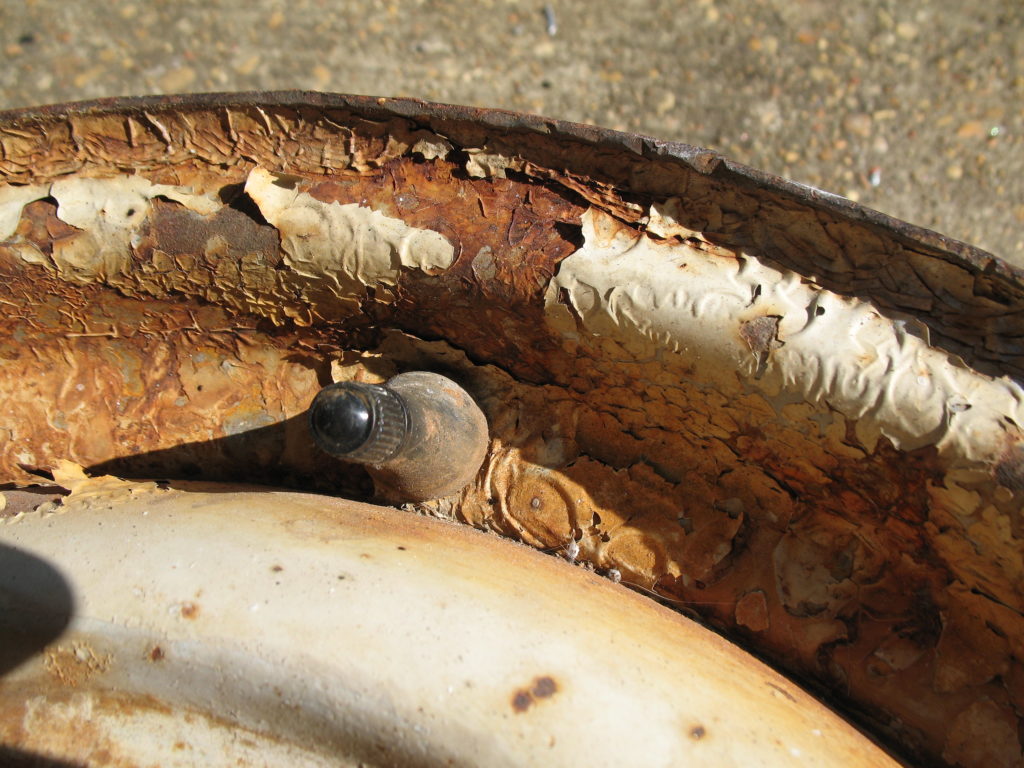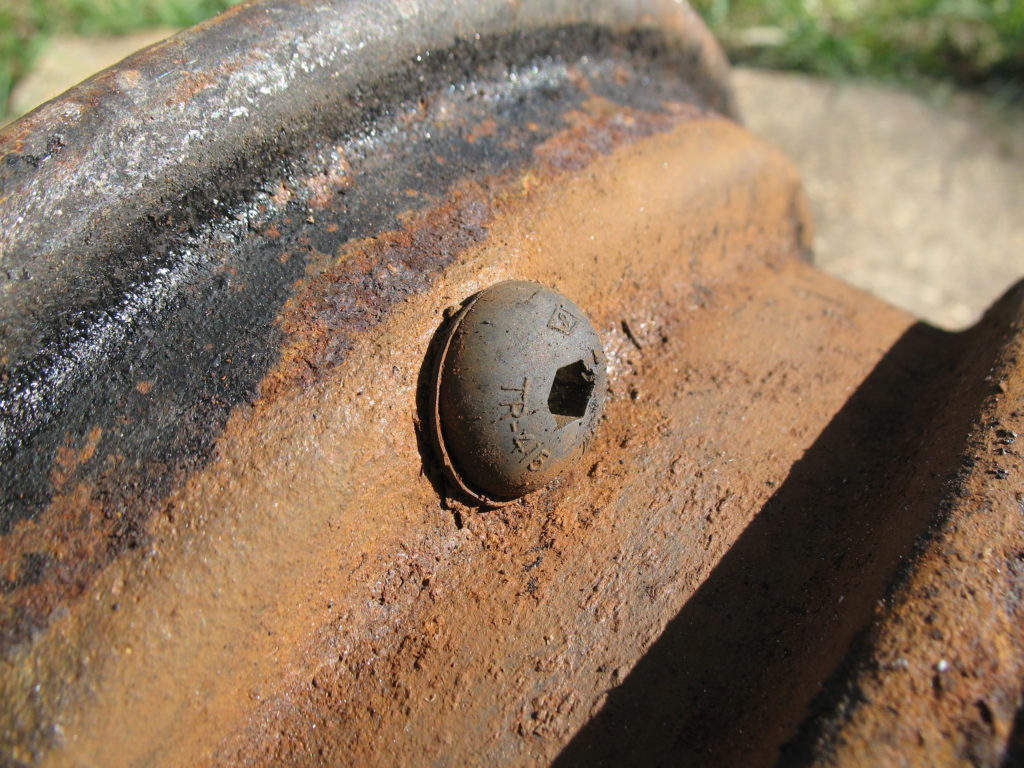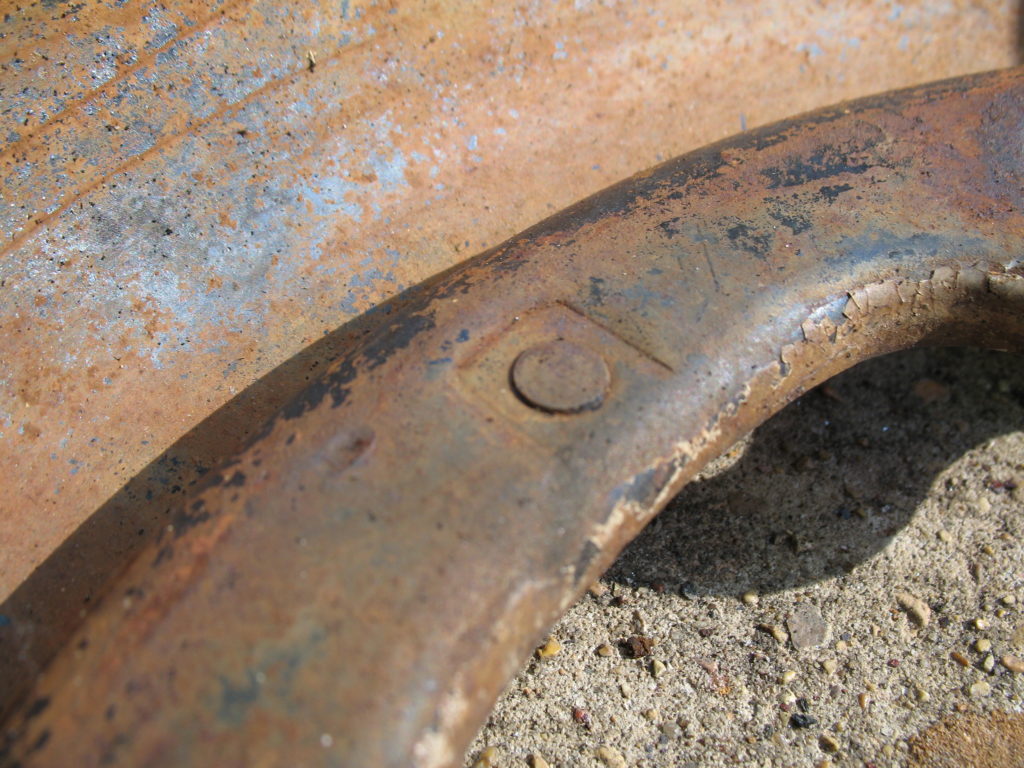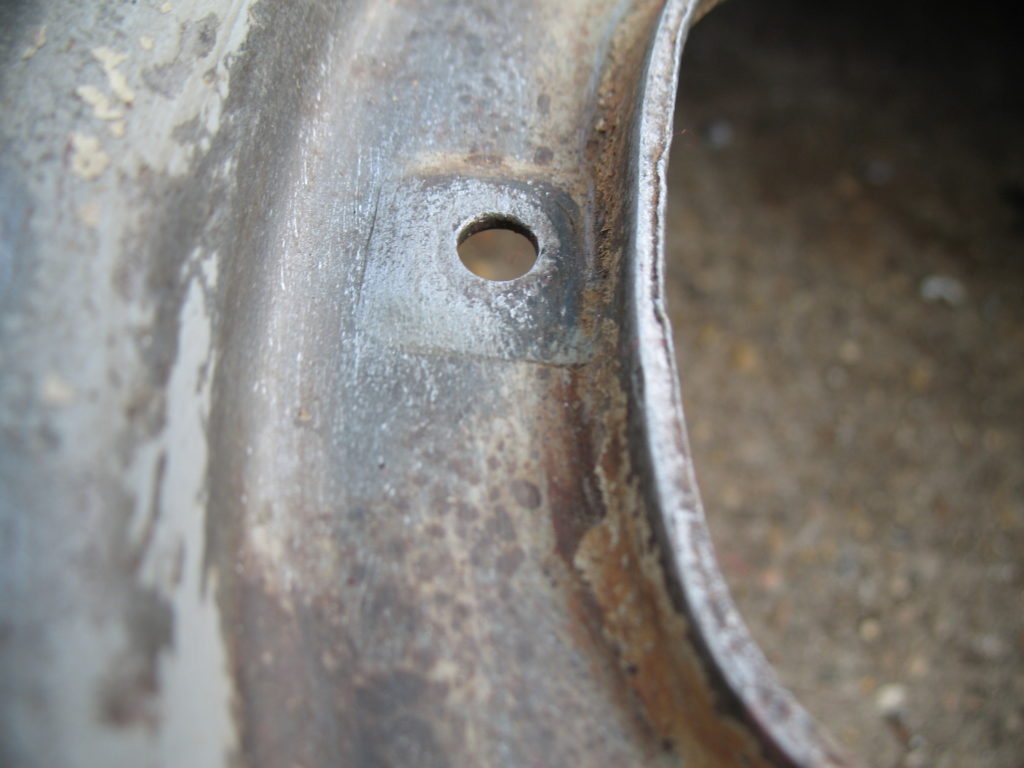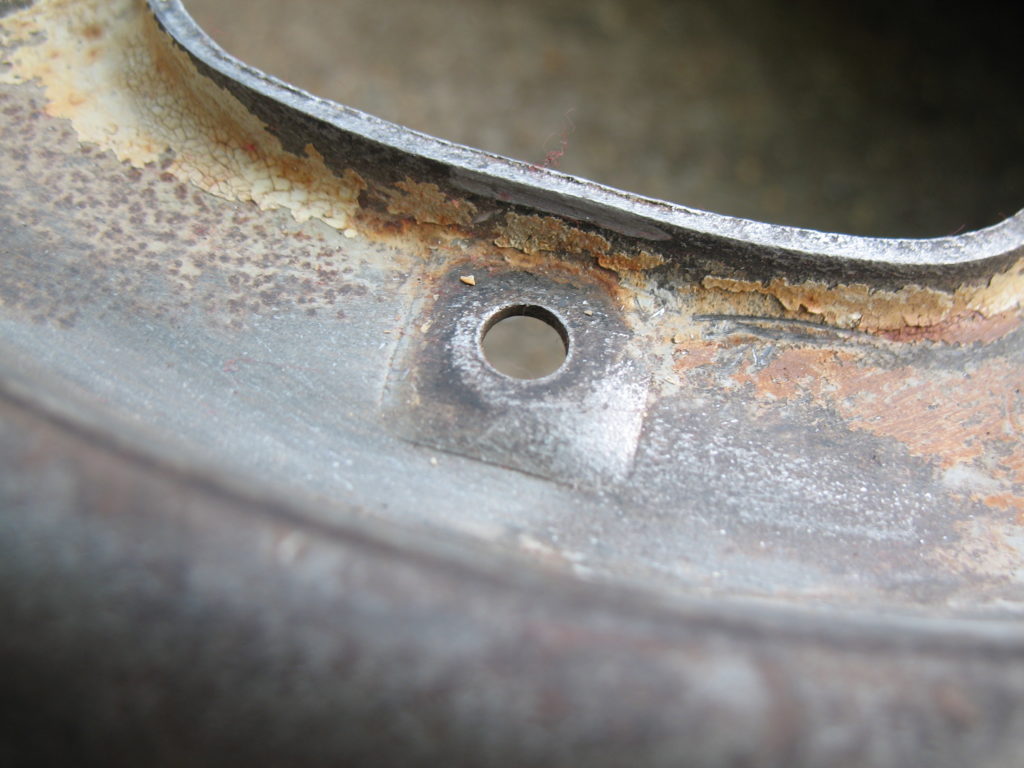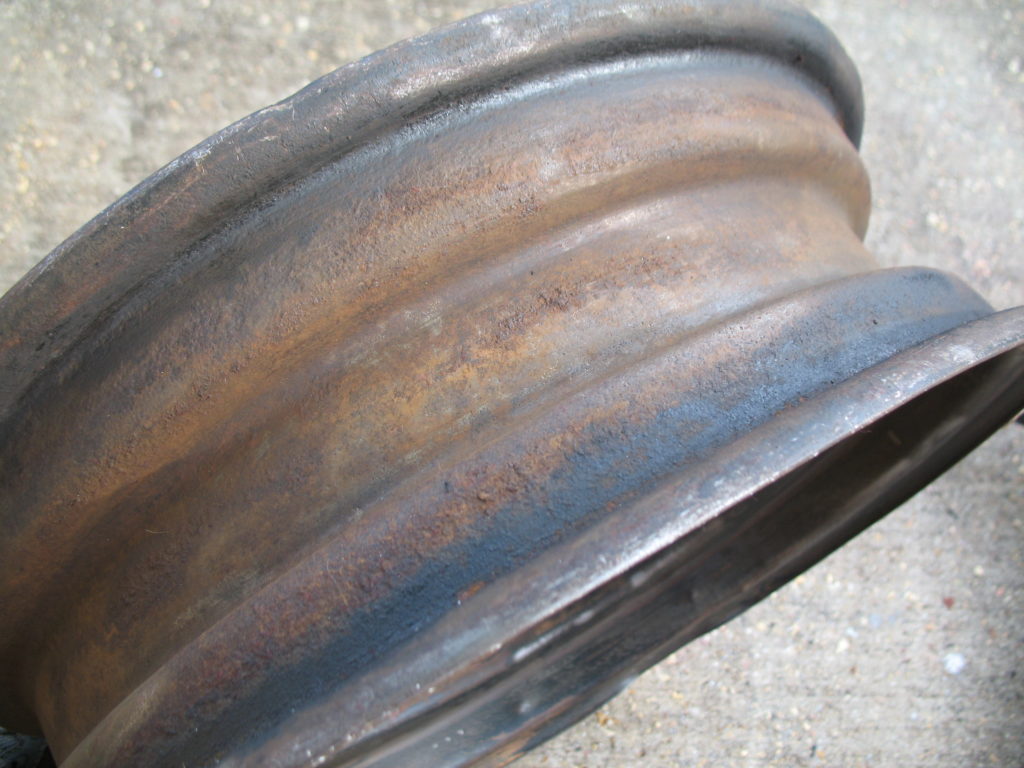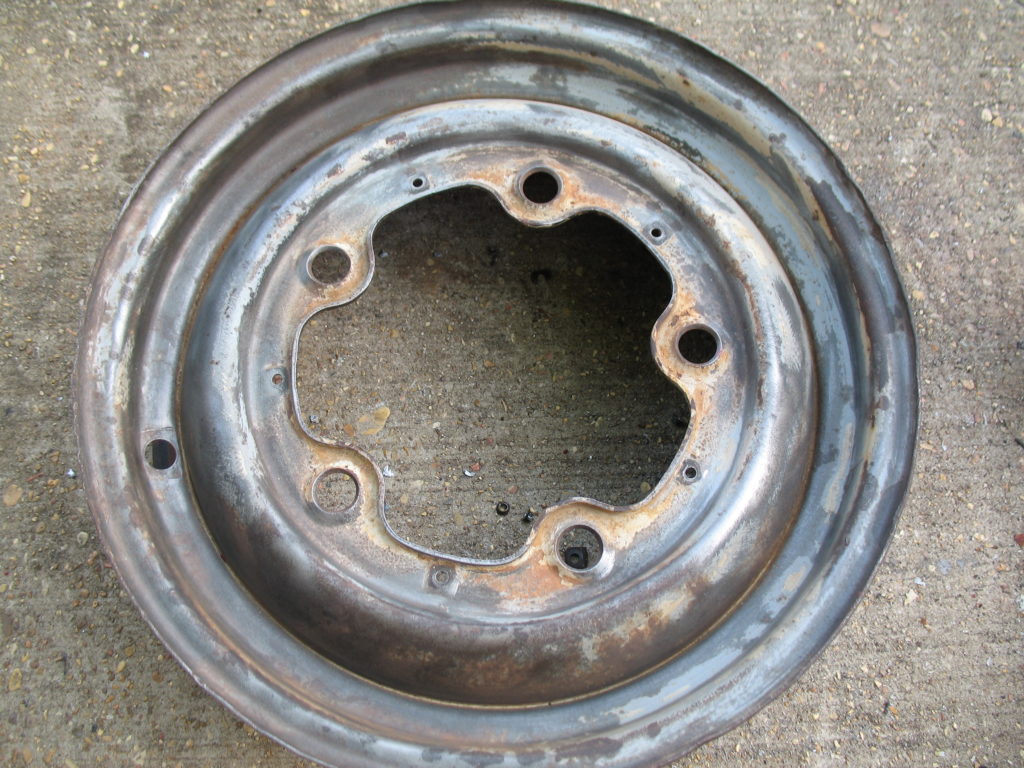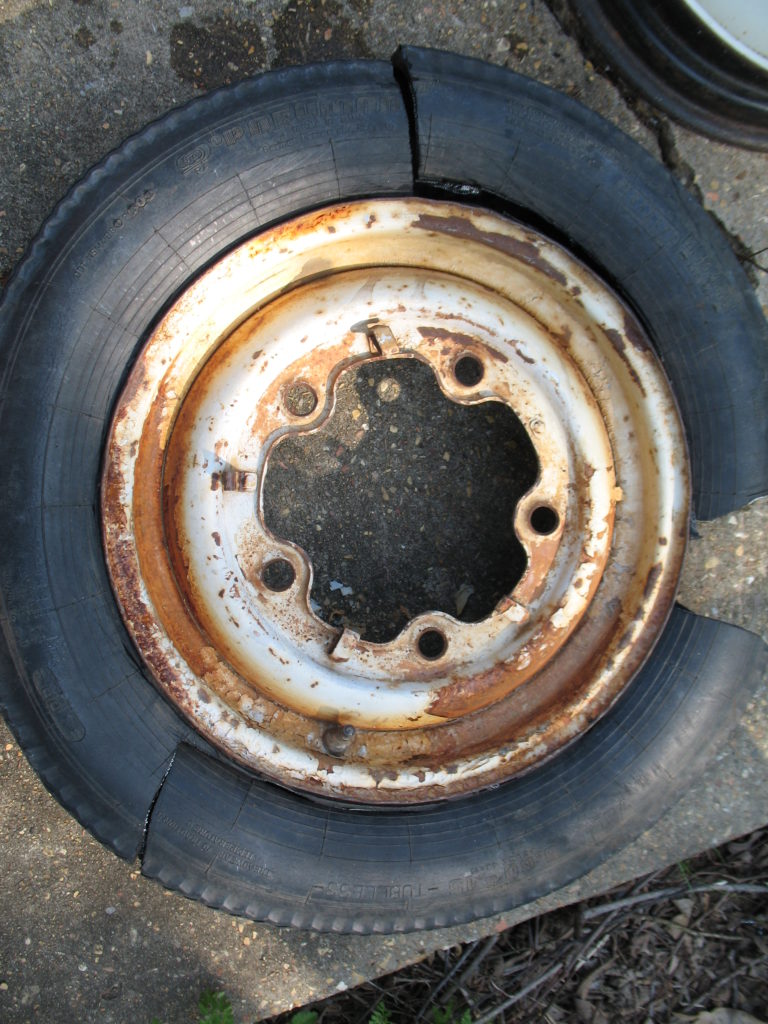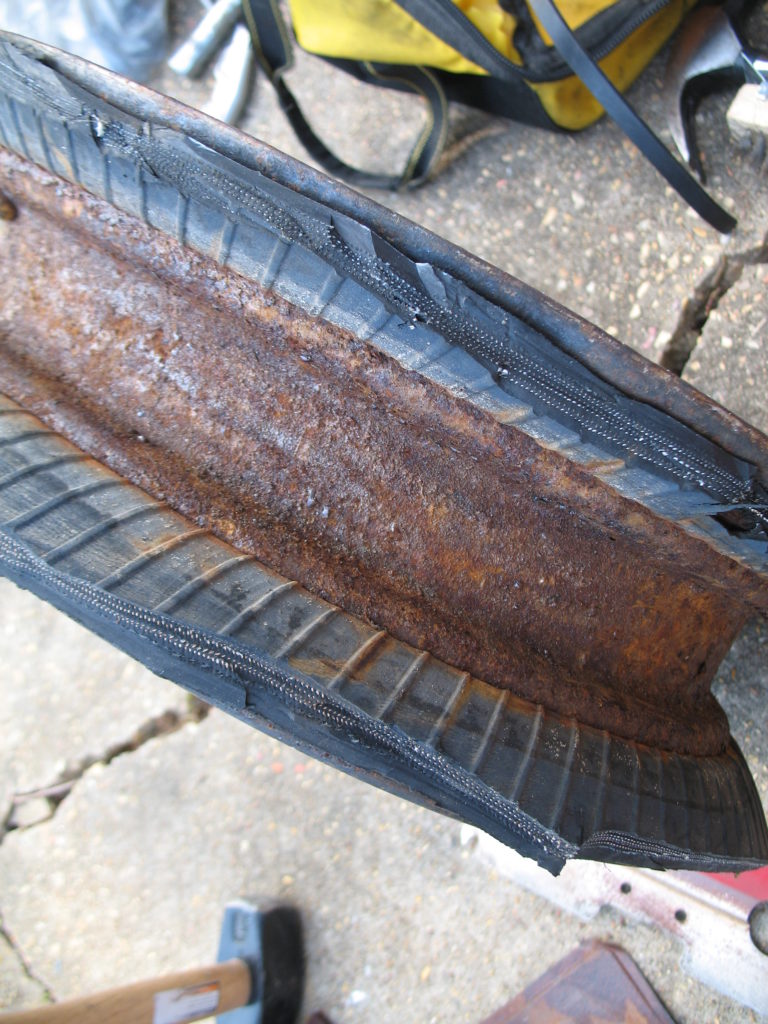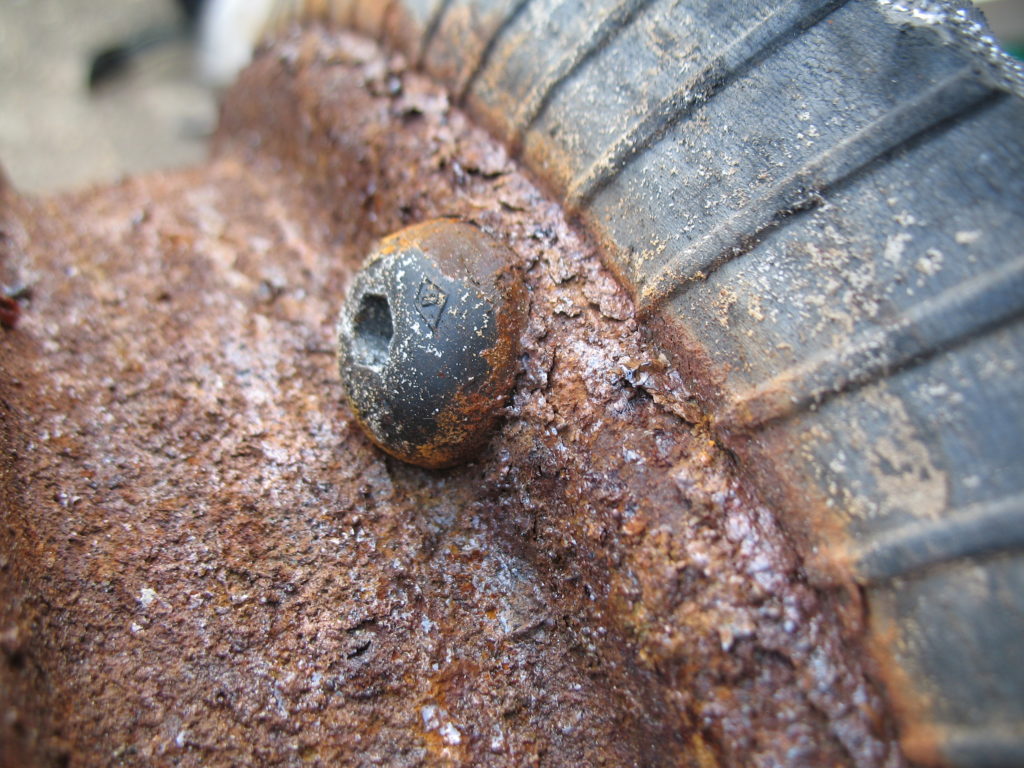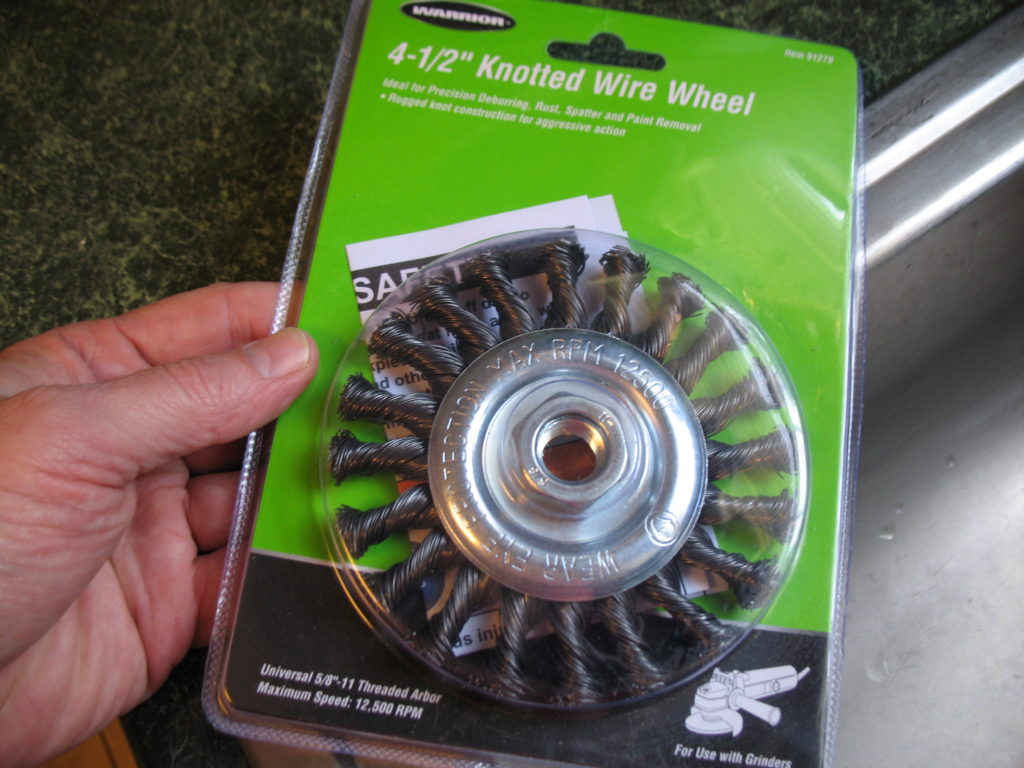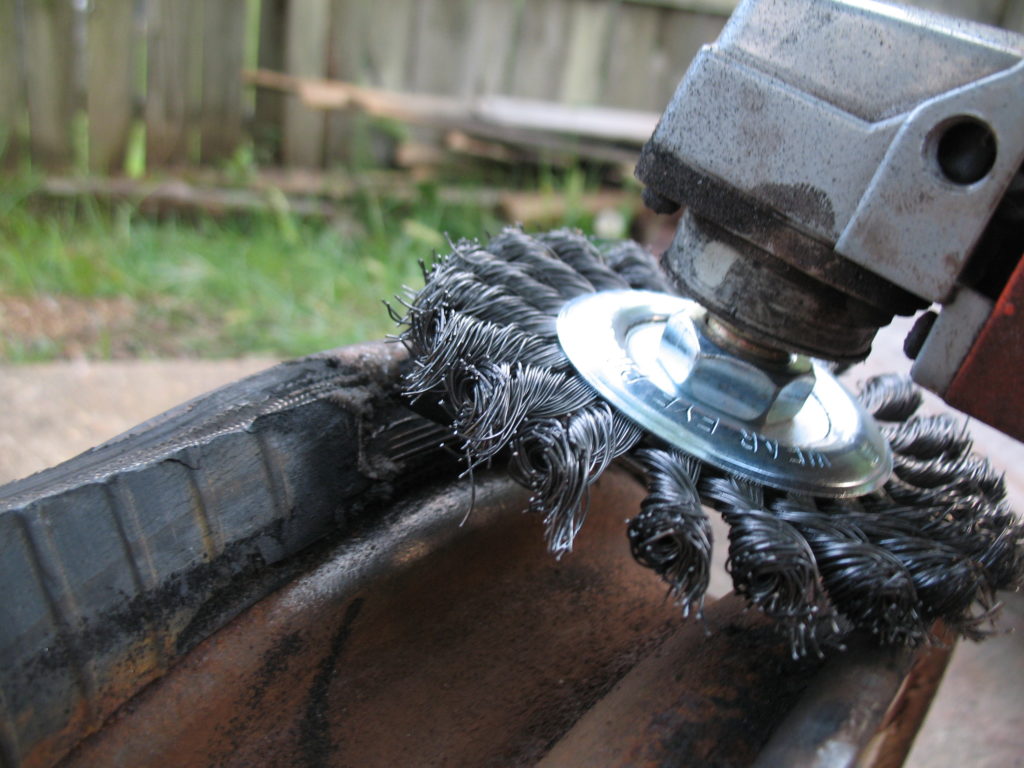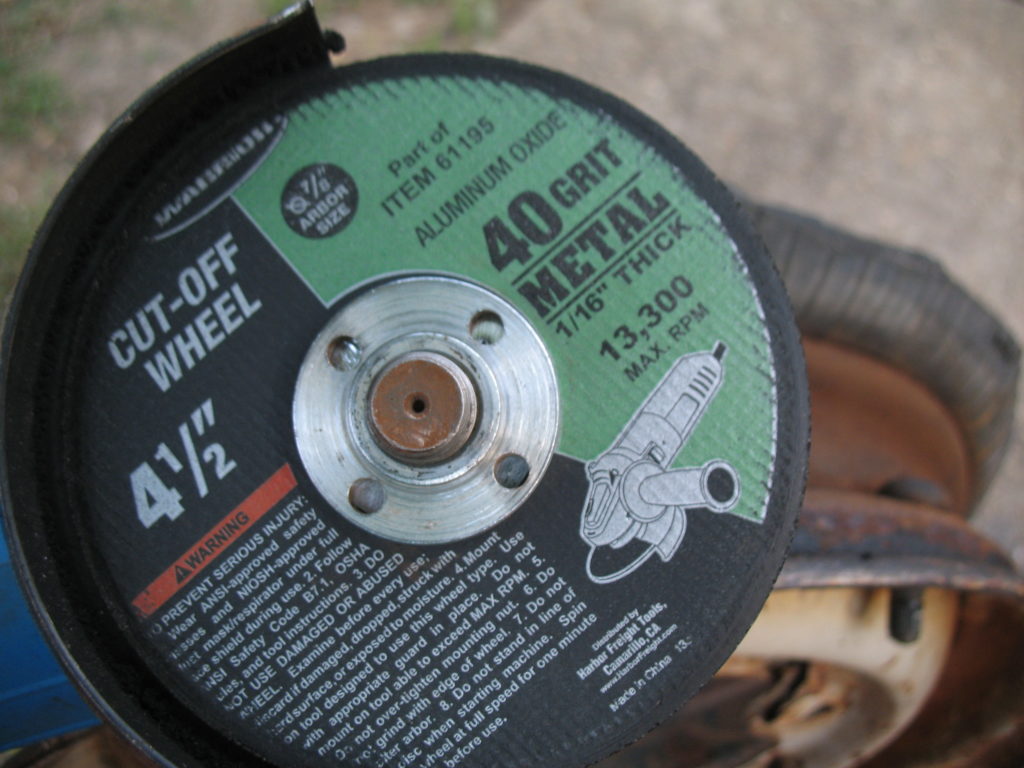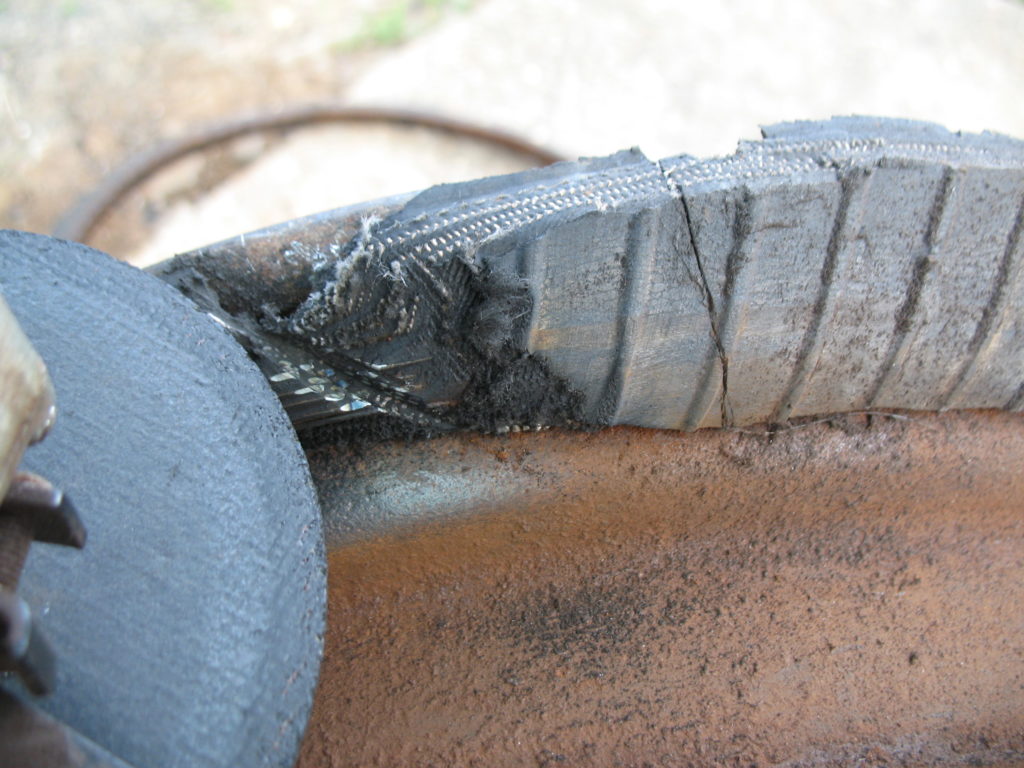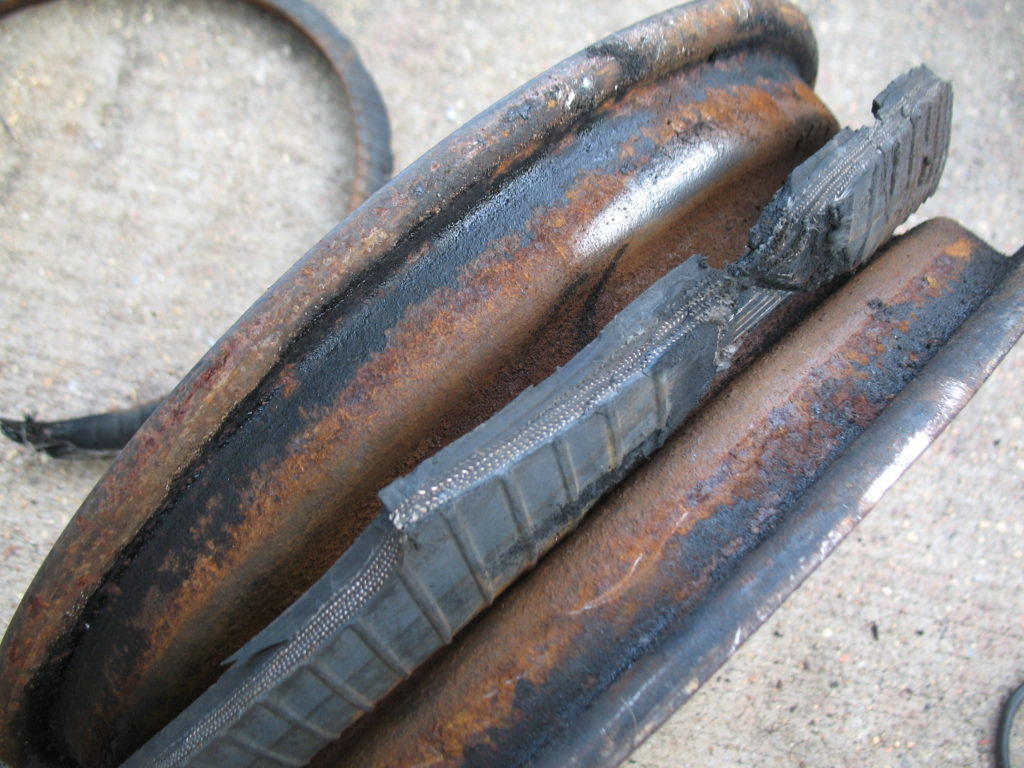I’ve decided to build a jig to hold a wheel while I’m installing rivets. The basic plan is this:
- Use a piece of steel plate as the base. Mine was about 1/16″ (1.5 mm) thick.
- Weld the rivet install tool, and two wheel support pipes to the steel plate
- Create two wheel hold-downs out of pipe with nuts and washers.
For more information, see Wheel Repair, pt. 3

Steel Plate on the welding table. 
Everything test-fitted. 
Metal cleaned-up a bit on supports and plate. 
Rivet Install tool, in place and ready to weld. 
The two wheel hold downs, a short pipe with nut and washer. 
Wheel support, with a VW lug bolt pressed in by hand. 
The finished jig. I thought painting it would hide some of my bad welding. It doesn’t.
On the wheel hold-downs, I was going to put a bolt through the top to act as a handle, but they seem to work well enough without it. I can always add them later. I did need to weld a washer under the nut, on the bottom side of the hold-down; just a pipe with a nut would not tighten-up enough against the wheel.
For the wheel supports with the VW lug bolts, they too seem to hold up when tightened, and don’t turn. I could weld them to the pipe, or hammer the pipe flat against the bolt to keep it from turning, but as of now I think it will work without that. Plus, I won’t be damaging the lug bolt and will be able to return it to use in the future.
